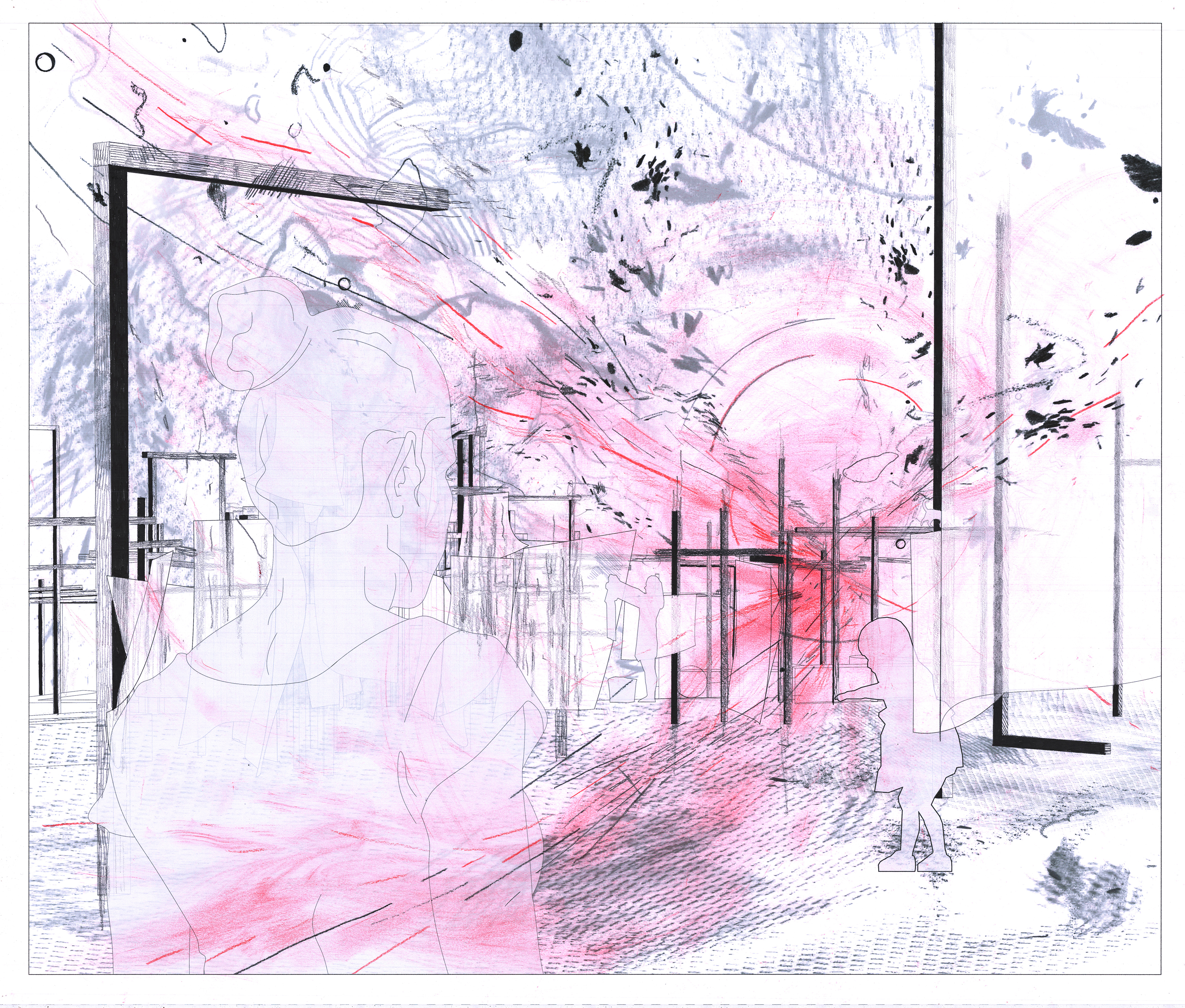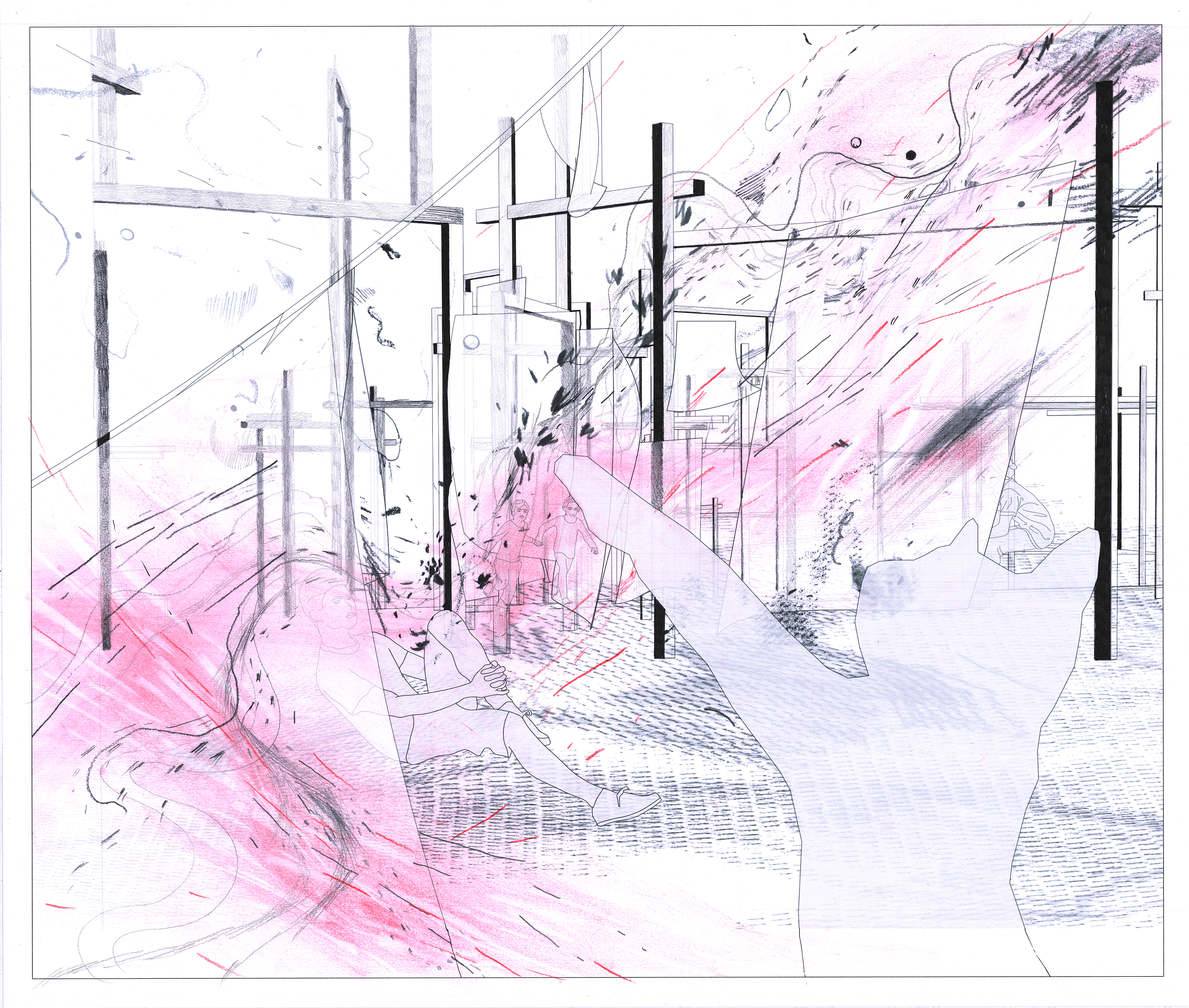BETWEENTHESHEETS

Thresholds in architecture are defined as a zone of transition, to interrupt spatial boundaries and a space that is directed in by the occupants in an
“architectural choreography.” ¹
~ Till Boettger
“architectural choreography.” ¹
~ Till Boettger



Between the Sheets proposes a mellow space for marginalised communities to assist in their rehabilitation with society. This includes, but is not limited to, the homeless, low-income families, those struggling with mental/physical health issues, and ex-convicts etc. The simple, familiar, and gentle routine of laundry is shared with others. This threshold architecture utilises organisation and interaction to assist with healing, and creating meaningful connections with the people and those around them.
A purist might question the project’s validity as ‘architecture’. It lacks expectations of enclosure, shelter, and technical complexity. The drawings are emotive but elements are not clearly delineated… Can we imagine architecture instead in its social dimension, as a social structure? We may not need to perform formal gymnastics if similar effects can be found in simplicity.
Consider the user’s slow promenade as they experience space through the structures, and as they intersect and share space with others. The ‘architecture’ is in the atmosphere, amongst the soft planes; it is in between. This architectural exploration finds people and their interrelations at its foundation. Without them, ephemerality and tenderness would cease to exist. The timber structures would simply be structural timber, and nothing more. Experiences activate architectural qualities.
![[1:50 Plan] Graphite, coloured pencil, pen and pastel chalk on paper, 885mm x 580mm.](https://freight.cargo.site/t/original/i/24e25d58d76c8ecbb35786cddad98ee33bdaec0c4c19a42e555a6442b67982d8/site-plan-1to50.jpg)
Focus, slowness, organisation, and routine. The community of reproductive launderers are immersed in space by their actions — Soaking, cleansing, washing, wringing, hanging and drying, alongside casual chit chat and gestures of conviviality. Place is not shaped visually from the outside in, as an architectural designer might, but from the inside out. In this intervention, there is no final completion of a space, only a topology of an everyday ritual. This is a constellation of drifting and flowing lightness, a sensory experience turning away from architecture’s visual presence, orchestrated by the things and actions that inhabit it.
The place occupies a plot of land within suburbia — space constituted by everyday actions of living, overwhelmed by other planning rules, codes, and regulations. Systems that are, for the most part, overlaid and imposed upon the land, without too much care for what was there before. What might it mean to design instead to dwell within the land? The suburbs have been reduced to ‘public’ and ‘private’ spaces. The social concept of sharing, the provision of a shared space, is shrinking in the face of an outward looking, independently driven public.
Architecture, as a social construct, often accommodates our behaviours, daily rituals, and individual or shared values. It can also change and question these norms, or even anticipate and imagine new normals — What happens when an activity is individualised, or made private by an architect's design? What happens when we redesign it out of the private realm, and place it back into a shared realm? What sort of societal norm is being imagined, when laundry, the private labour of an individual household, becomes externalised into a wider community act?
“Between the Sheets” is an alternate proposition of a social structure. A shared place facilitating communal activities, much like a shopping mall, gym, or theatre — without privatisation or commodification. The reproductive actions of these launderers are done with, or alongside others, and are governed with others. This community is not here for consumption or entertainment, but to wash, pause, redirect, gain comfort, or for realisation. To briefly insulate themselves from the noises of a wider city in flux.
![[1:25 Section] Graphite, coloured pencil, pen and pastel chalk on paper, 1765mm x 450 mm.](https://freight.cargo.site/t/original/i/f8ad3734a5d637e44b57262d42ac337d6b6bfaeaaa5c95af438ee72f3a17f0fb/section-1to25.jpg)
Move between the sheets gently, sensitively, and with discipline. Hear the sounds of washing, trickling water. Hear distant murmurs and close breaths. Feel the cold, delicate touch of garments against your worked palms. Feel their weight as they become soaked. Smell the sweet lavender in drying clothes and crispness of fresh grass. Sit around washing pools and sense intimacy with others, in the closeness of looking, listening, and feeling. Reintroduce softness and kindness back into suburbia.
[Project by Pansy Ou in discussion with Ethan Chung]
¹ Boettger, Till. Threshold Spaces: Transitions in Architecture. Analysis and Design Tools. Boston: Birkhäuser , 2014, 10.
Pansy Ou is a third year BAS student at the University of Auckland, discovering her design practice through mixed media explorations and analogue drawings. Between the Sheets was completed as part of stage 3 design under the warm tutorage of Lynda Simmons and Tane Pamatatau-Marques.

